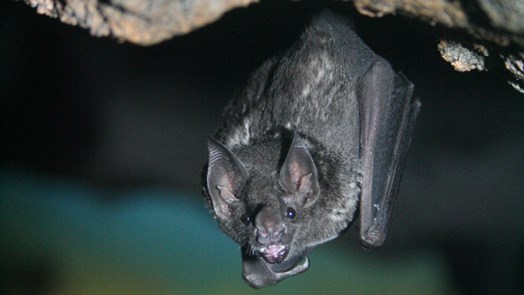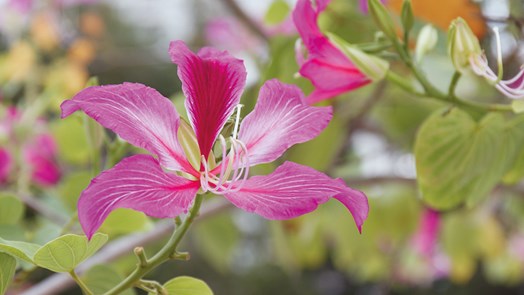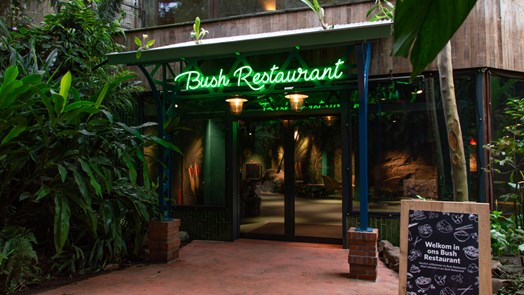Revolutionary project in the world of zoos Burgers' Bush celebrates 30th anniversary
Friday, 1 June 2018

Accompanied by an African drum roll, Mr Pieter van Vollenhoven officially opened Burgers’ Bush on 1 June 1988. Never before had a fully covered tropical rainforest on such a large scale been designed so realistically in which dozens of animal species live in great freedom amidst hundreds of tropical plant species. Today, on the occasion of its 30th anniversary, the almost 4 acres Bush is home to around 1,500 plant species and dozens of animal species from all classes of vertebrate animals. Burgers’ Bush proved to be a huge success for more than one reason: many endangered species have successfully reproduced in the Bush and have made important contributions to European breeding programmes. In addition, the number of visitors to the zoo doubled within one year of the opening. For many people, the Bush is the first intensive introduction to the wonderful world of the tropical rainforest; a powerful tool to stimulate awareness and active conservation.
A visionary project
Zoo director Antoon van Hooff already developed detailed plans for a covered tropical rainforest in the late 1960s. However, he wanted the building to be as perfect as possible: a structure without interior pillars, which would affect the visitors' experience. In the early 80s, a special plastic material came on the market, with which the roof construction consisting of hundreds of air cushions could be realized. The spectacular innovative construction of Burgers' Bush itself was also awarded prizes: in 1988 the Dutch Steel Prize and in 1989 even the European Steel Prize was awarded for the revolutionary design of the project. Burgers' Bush was so innovative that both zoological colleagues and professionals, and visitors had to get used to the new concept. Using all their senses and like true explorers, visitors had to seek out the animals who live in great freedom and are therefore less visible sometimes. It didn't take long, however, for the Bush to become a huge success and the concept of this eco-display inspired zoos all over the world.
Successful breeding and extraordinary animal species
Besides being the studbook keeper of the European breeding programme for aardvarks, Burgers' Zoo is also the most successful breeder of this extraordinary animal. The Caribbean manatees have also given birth in the Bush. In 2017, these animals were moved to the zoo's newest eco-display, Burgers' Mangrove. The breeding of various bird species is very successful in the Bush: in the past and present many hooded pittas, Luzon bleeding-hearts, Nicobar pigeons, western crowned pigeons, various types of bulbuls, sunbitterns, and for example, blue-black grassquit, Montserrat oriols and Rose-bellied bunting have hatched from the egg in Arnhem. Species such as the screaming piha and chachalacas create the characteristic bird sounds in the Bush and do well in this natural environment.
The development phases of a tropical rainforest
At the opening of the Bush in 1988, most plant species were still young and only a few metres high, But, partly thanks to the humidity that varies between 70 and 100% depending on the season, and the tropical temperature (20 to 24 degrees Celsius), the tropical plants quickly grew, just like in nature, into sometimes impressive trees up to 20 metres in height. Just like in the tropics, the Arnhem jungle has also gone through the various natural stages of a tropical rainforest: from the pioneering phase, with fast-growing trees and plants with a low shade tolerance, to the secondary developmental phase in which the slow-growing trees gain momentum, which initiates the primary phase in which epiphytes fight for a place on the high branches of trees and in tree trunks in the battle for water and sunlight. Nowadays, the plant caretakers prune approximately 25,000 kilos of plant material per year! This amount is growing year on year. Part of the freshly pruned plant material serves as fresh food for various food specialists, such as the dusky leaf monkey.


